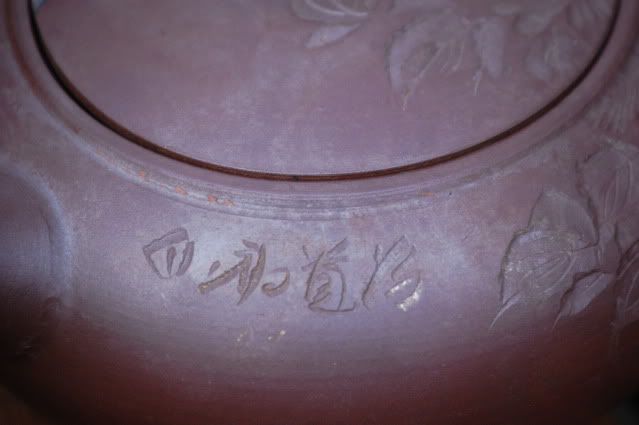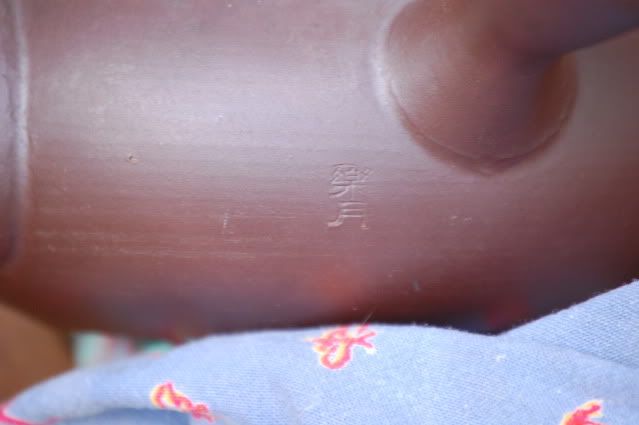My Japanese is very poor >.< Can anyone help me with what is says on those two teas? I'm mainly wondering if there is any brand name, tea type any specific info about the teas. If anyone knows Japanese and can translate I would be very thankful!
Help with Japanese
Hey everyone!
My Japanese is very poor >.< Can anyone help me with what is says on those two teas? I'm mainly wondering if there is any brand name, tea type any specific info about the teas. If anyone knows Japanese and can translate I would be very thankful!


My Japanese is very poor >.< Can anyone help me with what is says on those two teas? I'm mainly wondering if there is any brand name, tea type any specific info about the teas. If anyone knows Japanese and can translate I would be very thankful!
Re: Help with Japanese
I'm not an expert, so take this at face value...
First, the reddish-picture is upside down. Once flipped, the three big characters on the left (杜の恵) "mori no megumi" say something like "Blessing of the Forest" and appear to be the name of the tea. The characters on the right... not so sure. Meiji (明治) and kamitaka? shinkou? (神高). Meiji was an emporer (and an era of Japan), kami is god/divine, and taka means high or precious. There's also smaller characters there, some of them say 'tea' but i can't read the other ones well enough.
The purple picture basically is the instructions on how to brew the tea.
The bottom picture appears to mostly say what the english says (that it's organic tea). The big gold sticker says "sencha" (煎茶) -- which is the type of tea. I can't really see a brand-name on it.
Hope that helps to some extent.
First, the reddish-picture is upside down. Once flipped, the three big characters on the left (杜の恵) "mori no megumi" say something like "Blessing of the Forest" and appear to be the name of the tea. The characters on the right... not so sure. Meiji (明治) and kamitaka? shinkou? (神高). Meiji was an emporer (and an era of Japan), kami is god/divine, and taka means high or precious. There's also smaller characters there, some of them say 'tea' but i can't read the other ones well enough.
The purple picture basically is the instructions on how to brew the tea.
The bottom picture appears to mostly say what the english says (that it's organic tea). The big gold sticker says "sencha" (煎茶) -- which is the type of tea. I can't really see a brand-name on it.
Hope that helps to some extent.
Re: Help with Japanese
I took a better look... the ones in the lower right (would be upper left is flipped correctly), also say "sencha," as:Drax wrote:There's also smaller characters there, some of them say 'tea' but i can't read the other ones well enough.
扶茶人.... apparently 茶人 (cha jin) can mean master of the tea ceremony, or a person with eccentric taste. While 扶 is a symbol for aiding or assisting. I'm not sure, then if it means that this stuff is helpful or useful for a master of the tea ceremony, or if it's good at aiding somebody with their eccentric taste? haha... probably both.
Re: Help with Japanese
The name on the can says "Meiji Jingu" or Meiji Shrine. This can was sold at the small gift shop at Meiji Shrine. I recognize the can - I used to live not far from there. Here's a Wikipedia link to info on Meiji Shrine. It shows the name in Japanese as well. You can see it matches the can.
http://en.wikipedia.org/wiki/Meiji_Shrine
http://en.wikipedia.org/wiki/Meiji_Shrine
Re: Help with Japanese
Hrm, can I plead the upside-downness for confusing 高 with 宮 ?? 
So the can was from the gift shop of a shrine. . . but the tea itself was most likely a generic sencha? Or what kind of tea (quality) do they normally set at shrine gift shops? Hmm... either way, very interesting!
So the can was from the gift shop of a shrine. . . but the tea itself was most likely a generic sencha? Or what kind of tea (quality) do they normally set at shrine gift shops? Hmm... either way, very interesting!
Re: Help with Japanese
Sorry for not responding earlier, for some reason I didn't get any notifications about replies...
thanks for all the helpful info! and sorry about the upside down picture (i realized it was upside now right after I posted )
)
The red tin was sold in Tokyo near Yoyogi park, but I noticed that these particular tins are quite common in Japan (as in they are not vendor or place specific). The tea in this one was either kabusencha or gyokuro, looked rather like a shaded tea
So there is no tea brand or vendor name on the plain sencha?
thanks for all the helpful info! and sorry about the upside down picture (i realized it was upside now right after I posted
The red tin was sold in Tokyo near Yoyogi park, but I noticed that these particular tins are quite common in Japan (as in they are not vendor or place specific). The tea in this one was either kabusencha or gyokuro, looked rather like a shaded tea
So there is no tea brand or vendor name on the plain sencha?
Re: Help with Japanese
ha ha! this was really funny, tea surely aids people in a lot of thingsDrax wrote:Drax wrote:I'm not sure, then if it means that this stuff is helpful or useful for a master of the tea ceremony, or if it's good at aiding somebody with their eccentric taste? haha... probably both.
Re: Help with Japanese
Oh yeah! I just checkd, Meiji Shrine is where Yoyogi Park is, this is cool, it's like solving a mystery 
Re: Help with Japanese
As for the biggest part of the homework, the fuchsia text, it is an information for consumer. Basically it is very simple info about how to brew the tea (put one tbs of tealeaves into kyuusu pot, pour hot but not boiling water and after a while strain it into yunomi cup. You have to guess the correct temperature and steeping time by yourself.
Then you're informed that those high quality leaves were painstakingly and carefully chosen by the tea gurus of Japan.
Finally you're politely ordered to enjoy drinking your cuppa .
.
Then you're informed that those high quality leaves were painstakingly and carefully chosen by the tea gurus of Japan.
Finally you're politely ordered to enjoy drinking your cuppa
Re: Help with Japanese
Actually, 扶茶人 is read ma-cha-iri, machairi which means that it contanins powdered matcha.... I like to have a bowl of machairi sencha around 3PM or so as it gives me a boost to finish my day in the studio.I took a better look... the ones in the lower right (would be upper left is flipped correctly), also say "sencha," as:
扶茶人.... apparently 茶人 (cha jin) can mean master of the tea ceremony, or a person with eccentric taste. While 扶 is a symbol for aiding or assisting. I'm not sure, then if it means that this stuff is helpful or useful for a master of the tea ceremony, or if it's good at aiding somebody with their eccentric taste? haha... probably both.
Enjoy!
R
Re: Help with Japanese
Interesting... I guess that's actually:
抹茶入
not:
扶茶人
There were actually two problems there.
Makes a lot more sense... so much for reading Japanese upside-down...
抹茶入
not:
扶茶人
There were actually two problems there.
Makes a lot more sense... so much for reading Japanese upside-down...
Re: Help with Japanese
Woozl,Can any one read these?
The bottom photo reads raku getsu, fun/enjoyable moon. The top is a little harder as if it's a Japanese kyusu, it might be pre-war. Soon after the war the kanji system was revised....... sorry
Best,
R

